High-Stakes Stories: Discover the Best Books About Gambling and Betting
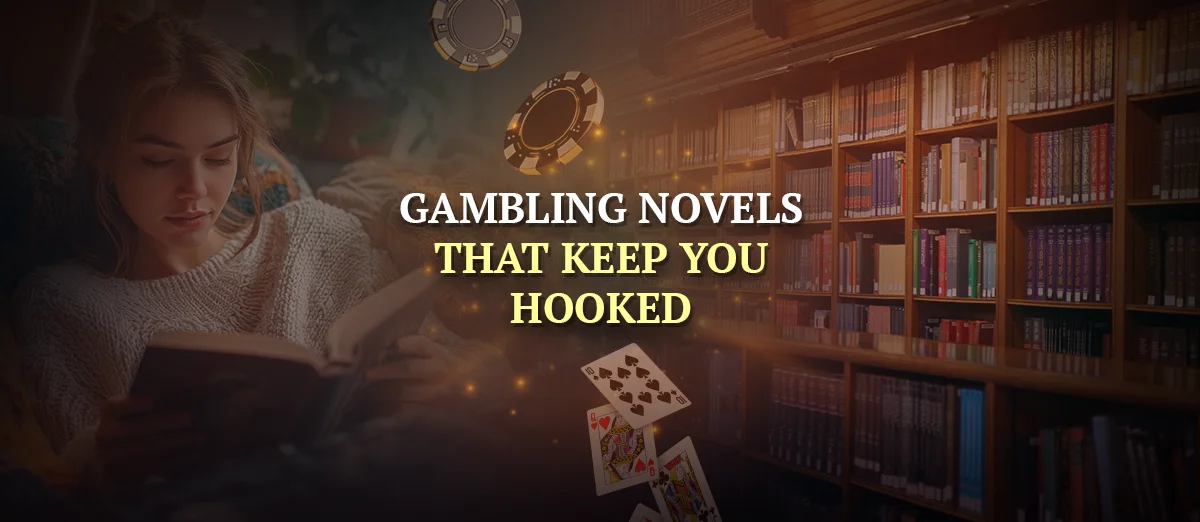
In this article, we’ll explore some of the most compelling and widely acclaimed novels with a gambling theme—both literal and metaphorical. From tense casino showdowns to psychological deep-dives into risk, obsession, and fortune, these books span genres and generations.
Whether it's the desperate roulette spins of Dostoevsky’s The Gambler, the surreal Vegas trip in Fear and Loathing, or the high-stakes poker of Casino Royale, each story uses gambling as a lens to examine deeper truths about human nature. We’ll look at what makes these novels endure, how they portray risk, and why readers continue to be drawn to their allure.
Thieves Gambit by Kayvion Lewis
Kayvion Lewis’s Thieves Gambit (2023) made a major splash in the book world when it hit the shelves, captivating readers with its fast-paced action, high-stakes competition, and a charismatic teenage protagonist navigating a world of deception.
With a diverse cast and a protagonist who is both brilliant and morally complex, Thieves Gambit is a crime thriller that stood out from all the others. It also tapped into the enduring appeal of stories about con artists, secret competitions, and games of chance—an irresistible mix of adrenaline and strategy.
The novel follows seventeen-year-old Ross Quest, a gifted young thief raised by a family of master criminals. While she’s been trained in the art of deception, she longs for a different life—one that isn’t dictated by her mother’s ruthless expectations. But when her mum issues an ultimatum, Ross is forced to enter the Thieves’ Gambit, an underground contest where elite young criminals from around the world compete in a series of high-risk heists.
The prize? One wish granted by the powerful figures who run the game. But losing isn’t an option, because if she fails, she dies. As Ross navigates a web of dangerous alliances, betrayals, and unexpected romantic entanglements, she must outwit her rivals and decide how far she’s willing to go to win her freedom.
The book’s mix of non-stop twists, smartly plotted heists, and a protagonist forced to question everything she’s been taught made it an instant hit. Readers praised its unpredictable storytelling and Lewis’s ability to balance action with character depth. The novel’s success quickly paved the way for a sequel, Heist Royale: Thieves Gambit Book 2, which came out late last year to much anticipation.
Heist Royale picks up where the first book left off, with Ross facing even greater dangers and moral dilemmas. This time, she finds herself entangled in a new, even riskier game—one that takes her into the world of high-stakes gambling and underground casinos. As she crosses paths with dangerous power players and faces temptations she never anticipated, Ross must once again rely on her instincts, cunning, and ability to manipulate the odds. The sequel expands on the thrilling world established in Thieves Gambit, raising the stakes and deepening the intrigue.
With its blend of deception, risk-taking, and game-like strategy, it’s the perfect jumping-off point to explore other great novels set in the world of casino gaming and betting.
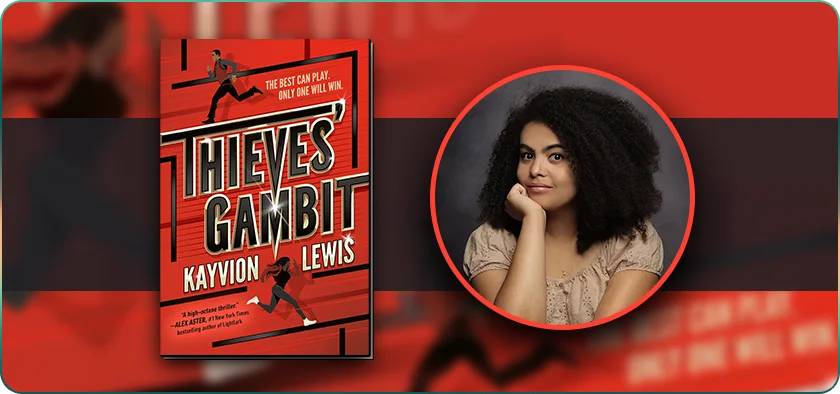
The Gambler by Fyodor Dostoevsky
Fyodor Dostoevsky’s The Gambler (1867) is a gripping psychological novel that explores addiction, obsession, and the volatile nature of human desire. Written under immense pressure—Dostoevsky had to deliver it quickly to settle gambling debts of his own—the novel is both a personal confession and a scathing critique of the allure of chance. Though often overshadowed by Crime and Punishment or The Brothers Karamazov, The Gambler remains one of his most fascinating works, offering a raw, intense examination of human psychology that continues to resonate today.
The novel follows Alexei Ivanovich, a tutor working for a debt-ridden Russian general in the fictional German town of Roulettenburg (a name inspired by Dostoevsky’s roulette addiction). Alexei is hopelessly infatuated with the general’s stepdaughter, Polina, a woman as enigmatic as she is cruel. To win her love, Alexei becomes entangled in the world of roulette, where fortunes are made and lost in an instant. His obsession with Polina soon mirrors his gambling addiction—both offering the tantalizing promise of victory but ultimately leading to self-destruction. The plot thickens as the general awaits an inheritance from his wealthy grandmother, only for her to arrive unexpectedly and—shockingly—succumb to the gambling fever herself. The story builds toward a frenzied climax, with Alexei descending into reckless betting, oscillating between triumph and ruin.
What makes The Gambler unique is its visceral portrayal of addiction. Unlike many gambling novels that depict gambling as a mere vice, Dostoevsky immerses the reader in the feverish mindset of his protagonist. The novel’s prose is rapid, erratic, and urgent, mimicking the rush of betting everything on a single spin of the wheel. The way Dostoevsky conveys the psychological grip of gambling—how it distorts time, warps rational thought, and creates an illusion of control—was groundbreaking for its time and remains one of the most vivid literary portrayals of compulsive behavior.
The book’s influence extends beyond literature, shaping how betting has been depicted in gambling TV shows and fiction ever since. Writers from Graham Greene to Hunter S. Thompson have drawn on its themes, while its core ideas—risk as self-destruction, the gambler as both hero and fool—continue to appear in films, TV, and psychology studies on addiction. Dostoevsky’s insights into human nature, particularly our susceptibility to obsession, make The Gambler an enduring text.
More than just a story about betting, The Gambler is a novel about the unpredictability of life itself. In Dostoevsky’s world, luck is fleeting, control is an illusion, and the greatest gamble of all may be love. That existential weight, coupled with its fast-paced drama, ensures its place as one of the great novels about risk and fate.
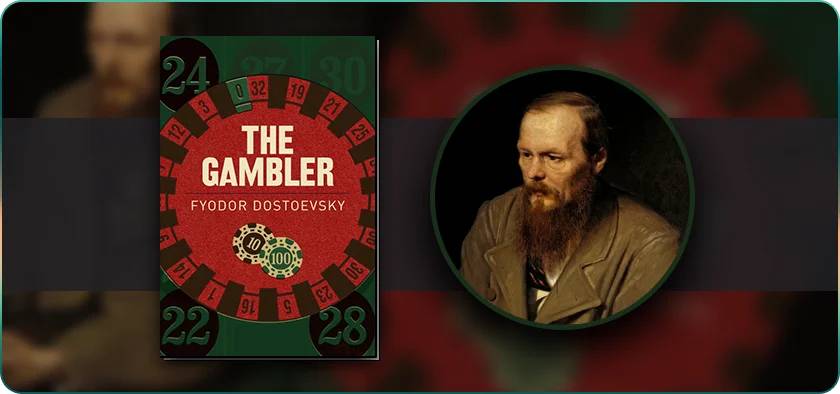
Fear and Loathing in Las Vegas by Hunter S. Thompson
Hunter S. Thompson’s Fear and Loathing in Las Vegas (1971) is a blistering, hallucinatory journey into the heart of the American Dream. Blurring the line between fact and fiction, the novel follows journalist Raoul Duke—Thompson’s alter ego—and his attorney, Dr. Gonzo, as they descend upon Las Vegas for a drug-fueled odyssey of excess, paranoia, and surreal misadventure. More than just a wild, drug-fueled road trip, Fear and Loathing is a scathing critique of American culture in the post-1960s era, making it one of the most influential and enduring works of 20th-century literature.
The novel’s plot is deceptively simple: Duke and Dr. Gonzo arrive in Las Vegas under the pretense of covering the Mint 400 motorcycle race, but their real mission is to indulge in a debauched, mind-altering spree through the neon-lit land-based casinos and grotesque excess of the Strip. Armed with a suitcase overflowing with narcotics, they careen from one misadventure to another—terrorizing hotel staff, attempting to navigate a press conference while heavily intoxicated, and encountering a bizarre array of gamblers, tourists, cops, and freaks.
As the drugs take hold, reality bends into surreal, grotesque episodes, reflecting Thompson’s disillusionment with the state of America. Beneath the novel’s frenzied humor lies a deep melancholy: a recognition that the countercultural dreams of the 1960s have curdled into the commercialism and moral decay of the 1970s.
What makes Fear and Loathing in Las Vegas unique is its style. Thompson pioneered “Gonzo journalism,” a form of first-person, highly subjective reporting where the journalist is not just an observer but a chaotic participant in the story. The novel’s erratic, fragmented prose mimics the experience of intoxication, pulling readers into Duke’s distorted reality. Ralph Steadman’s scribbly, ink-splattered illustrations further amplify the book’s manic energy, making it as much a visual experience as a literary one.
The book’s influence is enormous. It redefined the boundaries between journalism and literature, inspiring countless writers to embrace a more immersive, anarchic approach to storytelling. The novel’s unflinching look at drug use, corruption, and the shattered American Dream continues to resonate, influencing everything from cinema (Terry Gilliam’s 1998 film adaptation remains a cult classic) to music and counterculture movements.
Half psychedelic nightmare, half biting social critique, Fear and Loathing in Las Vegas endures because it captures something fundamental about America: its contradictions, its excesses, its dark underbelly lurking beneath the neon glitz. It’s a novel about gambling in every sense—not just at the casino tables of Vegas, but gambling with one’s sanity, one’s freedom, and the very notion of truth itself.
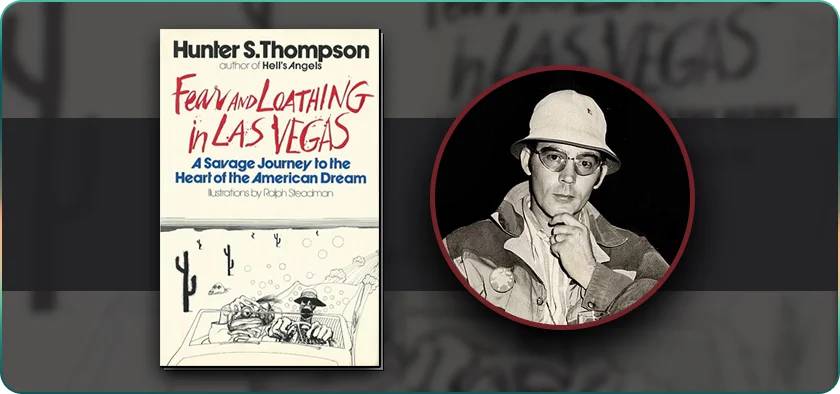
Casino Royale by Ian Fleming
Ian Fleming’s Casino Royale (1953) is the novel that introduced the world to James Bond, the suave, ruthless British secret agent who would go on to become one of the most iconic characters in modern fiction. A taut, stylish thriller that blends espionage with high-stakes gambling, Casino Royale set the foundation for the Bond franchise, influencing not just the spy genre but popular culture as a whole. With its mix of danger, luxury, and psychological intensity, the novel remains a landmark in thriller literature.
The plot follows Bond, a newly promoted 00-agent in MI6, as he is sent to Royale-les-Eaux, a fictional casino town in northern France. His mission: to bankrupt a Soviet agent, Le Chiffre, at the baccarat table. Le Chiffre, a financier for Soviet intelligence, has misused his organization’s funds and desperately needs to win big to cover his losses. Bond, armed with government money and his own formidable gambling skills, engages him in a tense, high-stakes game.
After initially losing, Bond recovers with the help of a mysterious benefactor and triumphs over Le Chiffre. However, victory at the casino is only the beginning. Soon, Bond is captured and brutally tortured by Le Chiffre, only to be saved at the last moment when Soviet agents assassinate his enemy.
The novel’s final act takes a more introspective turn as Bond recovers alongside Vesper Lynd, his MI6-appointed companion, with whom he falls deeply in love, only to discover that she has been a double agent all along. Her eventual suicide leaves Bond hardened, cynical, and more determined than ever to take down his adversaries, ending the novel with the famous line: "The bitch is dead now".
What made Casino Royale so successful was its fresh, sophisticated take on the spy novel. Fleming’s writing is lean and propulsive, balancing fast-paced action with meticulous detail, particularly in its depiction of gambling, luxury, and espionage. His Bond is not yet the indestructible hero of later books but a man who bleeds, doubts, and suffers. The novel’s psychological depth, particularly in its exploration of Bond’s vulnerability and disillusionment, sets it apart from other thrillers of its time and other novels in Fleming’s 007 series.
Casino Royale's influence cannot be overstated. It redefined the modern spy novel, paving the way for countless imitators. The blend of exotic locations, dangerous women, high-stakes gambling, and Cold War intrigue became a template not just for the Bond series but for the entire espionage genre. The novel’s emphasis on style—Bond’s taste for fine suits, martinis, and high-stakes games—helped shape the modern image of the spy as a cultured, deadly gentleman.
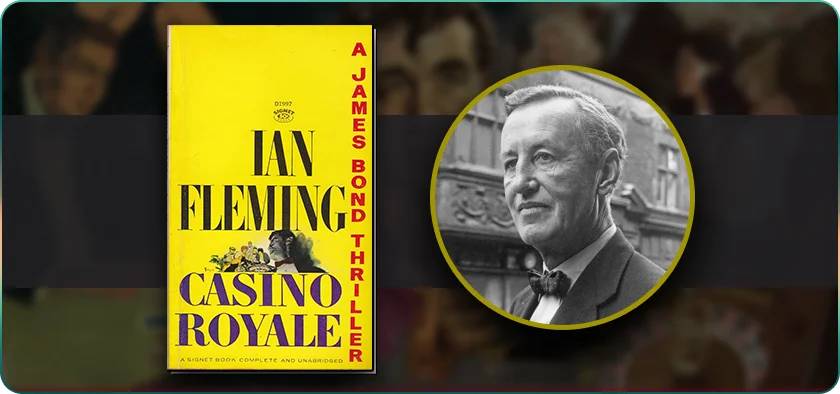
The Princess of Las Vegas by Chris Bohjalian
Chris Bohjalian's The Princess of Las Vegas (2024) introduces readers to Crissy Dowling, a Princess Diana impersonator performing at the Buckingham Palace Casino in Las Vegas. Crissy's life, filled with nightly cabaret shows and a facade of glamour, unravels when her estranged sister Betsy arrives with her teenage daughter, Marisa. Simultaneously, the casino's co-owners, Richie and Artie Morley, are murdered under suspicious circumstances, plunging Crissy into a perilous world of organized crime and family secrets.
The novel's success stems from Bohjalian's ability to craft complex characters and intertwine their personal struggles with broader societal issues. Crissy's portrayal as a woman grappling with addiction and identity offers readers a poignant exploration of self-worth and the masks people wear. Her profession as a Diana impersonator adds layers of irony and depth, highlighting themes of imitation and authenticity.
Set against the vibrant backdrop of Las Vegas, the narrative delves into the city's underbelly, exposing the stark contrast between its glittering facade and the darker realities lurking beneath. Bohjalian's depiction of a dated casino mirrors Crissy's own fading allure, symbolizing the transient nature of fame and fortune.
The novel's uniqueness lies in its fusion of crime thriller elements with a deep psychological study of its protagonist. While the plot is driven by murder mysteries and organized crime, the heart of the story is Crissy's internal journey. This blend of external suspense and internal conflict offers readers a multifaceted experience, distinguishing it from conventional thrillers.
The Princess of Las Vegas has garnered praise for its engaging narrative and character development. The New York Times Book Review lauded Bohjalian for bringing "a propulsive vitality and a sly humor to a surprisingly moving tale," noting the novel's balance of mayhem and poignant storytelling. Similarly, The Wall Street Journal commended it as an "engaging and imaginative thriller," reflecting its broad appeal.

Last Call by Tim Powers
Tim Powers’ Last Call (1992) is a genre-defying novel that blends history, mythology, and high-stakes gambling into a dark, intricate narrative. Often classified as part of the "secret history" subgenre, it intertwines real-world events with supernatural elements, crafting a story where the fate of Las Vegas—and the world—is tied to an ancient struggle for power. With its mix of Arthurian legend, Tarot symbolism, and hardboiled noir, Last Call remains one of the most ambitious and enduring novels in modern fantasy.
The novel follows Scott Crane, a professional gambler with a mysterious past, who finds himself entangled in a dangerous game with supernatural consequences. As a child, Scott was groomed to be the heir to a terrifying power—one wielded by his estranged father, a ruthless gambler named Ozzie Crane, who was once the Fisher King of the American West. The Fisher King myth, which Powers expertly reworks into the world of Las Vegas, becomes the backbone of the story: the health of the king determines the health of the land, and Scott is unwittingly drawn into a battle for this throne.
Scott's fate is tied to the Tarot deck, which in Last Call serves not just as a tool for divination but as a mechanism for controlling destiny. Years ago, his father tried to steal Scott’s soul using a dangerous game of poker played with a Tarot deck—a practice known as "Assumption" that allows gamblers to stake more than just money. Now, as Scott faces growing threats from those who seek to control him, he must piece together his fragmented past, battle old rivals, and play the highest-stakes game of his life to reclaim his identity and escape his father's influence.
Last Call was widely praised for its intricate plotting, deep mythological underpinnings, and compellingly strange take on Las Vegas. Powers' ability to weave supernatural horror into historical reality gives the novel a uniquely immersive quality. The book draws on real Vegas history—the construction of the Hoover Dam, the rise of organized crime, and the city's reputation as a place of reinvention—while seamlessly merging it with mysticism. The result is a work that feels both deeply researched and eerily plausible, even in its most fantastical moments.
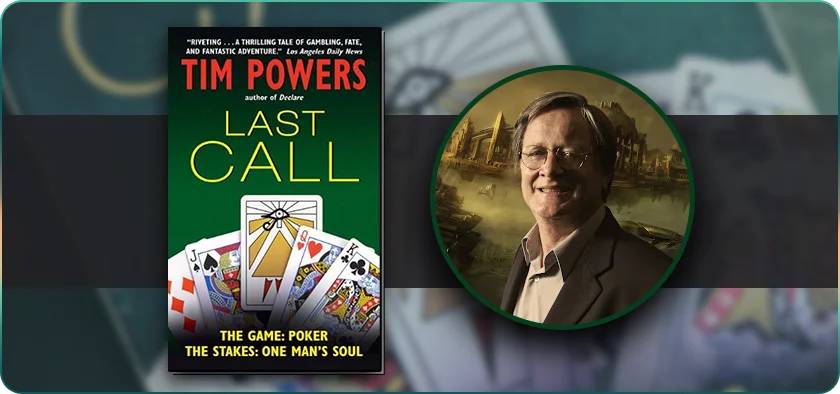



Review this Blog
Leave a Comment
User Comments
comments for High-Stakes Stories: Discover the Best Books About Gambling and Betting